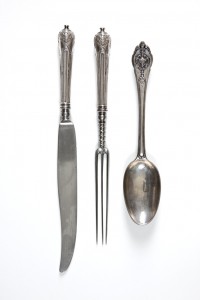 (412) 364-9114
(412) 364-9114

If you use your garbage disposal with any kind of regularity, you know that clogs are inevitable. Learning to dislodge clogs yourself can save a lot of time and money. These methods will help you clear away multiple types of clogs such as the type that occurs inside the unit (superficial clogs) and the type that occurs inside the pipe leading away from the unit.

Superficial clogs happen all the time. These are the types of clogs that occur when something undesirable enters through the garbage disposal opening and ends up inside the unit. Most commonly, these types of clogs are caused by kitchen utensils like spoons, forks and knives.
Sometimes superficial clogs stop the unit from working because it becomes too jammed. Other times, the unit will work with whatever is inside of it clanging around. If you’ve ever broken a glass into your sink, this type of clog can also be caused by shards of broken glass that have become wedged in the mechanical parts of the disposal. Here’s how you can fix this type of problem:
The food inside the garbage disposal is filtered into a pipe that carries food away. Sometimes, this pipe becomes clogged. This pipe is usually connected to the other side of your sink and may be connected to other pipes in your kitchen. If your garbage disposal becomes backed up, you may experience a problem when both sides of your sink refuse to drain. There are a few ways you can fix this problem.

Plunging is an inexpensive way to dislodge many standard clogs. Use a good-quality plunger for this type of project: don’t buy the cheapest plunger available. The better the plunger, the more likely it is to solve your problem.
Chemical clog removers are available for sale in most pharmacies, home improvement stores, big box retailers and grocery stores. Most chemical clog treatments are acceptable to use in garbage disposal units, and may even be used to increase slow drain speeds in the event of a partial clog.
Sometimes clogs inside pipes can’t be gotten rid of with a plunger or chemical treatments. Some handy homeowners are comfortable taking apart their pipes to fix clogs personally, but for many homeowners, this is the time when a plumber must be called in. For jobs like this, you’ll want to have a plumber you trust.